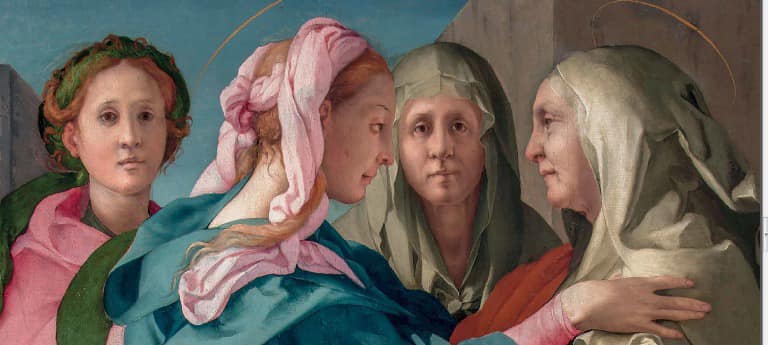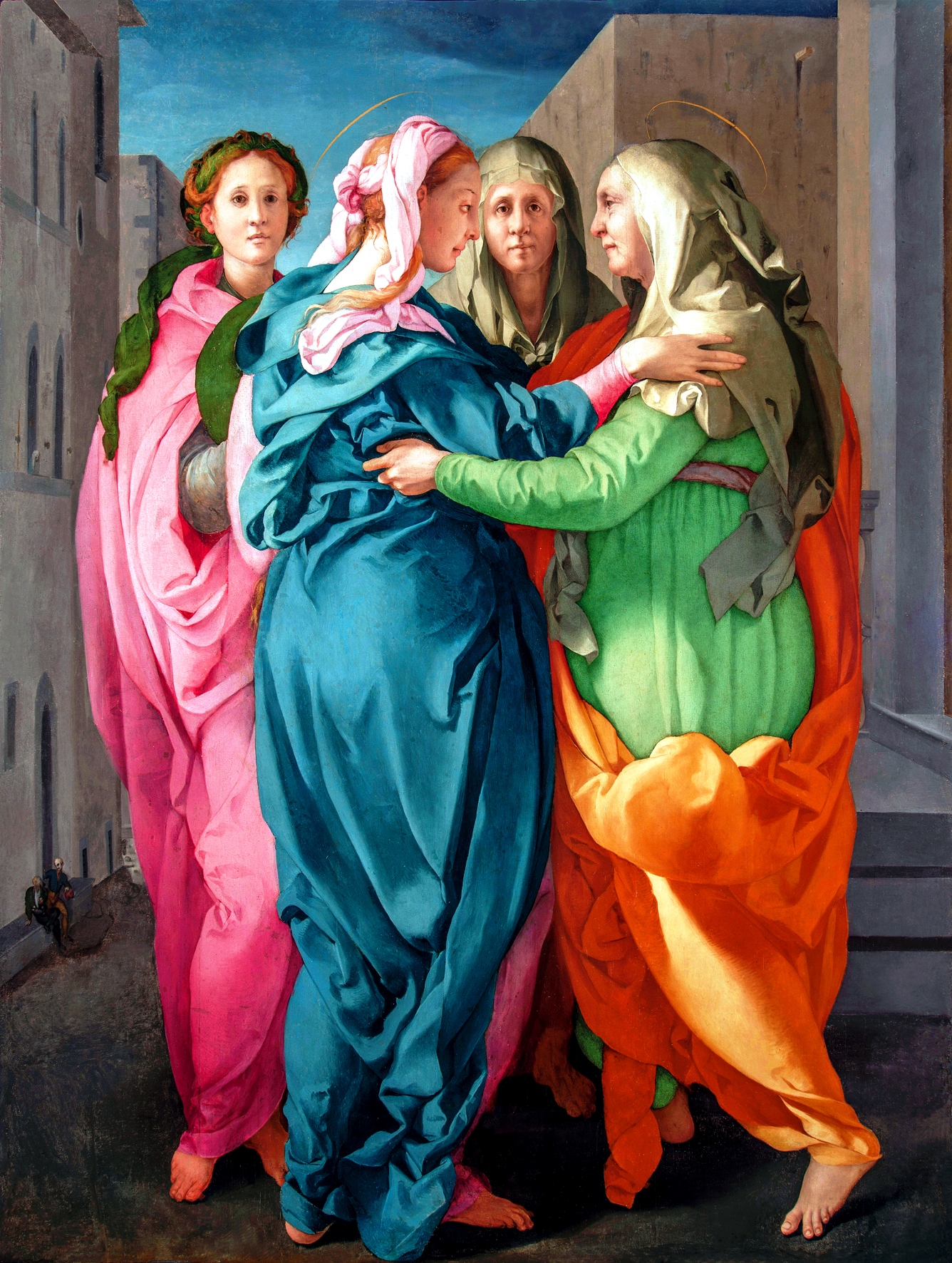
Pontormo’s The Visitation is a masterpiece that has captured the imagination of generations of art lovers over the centuries. In this post, we will delve into this fascinating work, exploring its creation, its significance and its lasting impact on art history.
The Visitation by Pontormo: description and curiosities

The Visitation by Pontormo, painted between 1528 and 1529, represents one of the most significant moments in Pontormo’s life and career and a landmark in the evolution of Renaissance art. This extraordinary work is much more than a simple religious painting as it is an emotionally rich fresco with a bold and innovative interpretation of a classical theme.
Pontormo’s work is closely linked to a series of events and cultural changes that characterised Renaissance Florence at the time. In painting the Visitation, the artist abandoned the traditional artistic conventions of the time, such as perspective and ordered composition, to embrace a more emotional and irrational representation of the scene. The characters in the work seem to dance in an atmosphere of spiritual ecstasy, reflecting the interiority and emotion of the protagonists, Mary and Elizabeth, during the encounter.
Moreover, the Visitation is a work that reflects the artist’s desire to experiment with new techniques and styles. Pontormo used a bold palette and vibrant colours, creating an almost dreamlike atmosphere that challenged the conventions of religious art of the time.
DESCRIPTION OF THE VISITATION BY PONTORMO
The background appears unreal, especially when one considers the size of the figures in the foreground and the comparison with the figures that appear in the background and almost disappear from the viewer’s sight.
For the creation of this work, Pontormo seems to have been inspired by the engraving of Dürer‘s ‘Four Women’, with which the Italian artist was familiar.
Mary and Elisabeth are depicted in profile and in the act of embracing each other, while the other two figures are portrayed from the source, as witnesses to the scene. Mary and Elisabeth look at each other, while the other two figures look at us and thus point their gaze out of the scene and outside the work.
Mary and Elisabeth have sweet, relaxed faces, but while Elisabeth appears old but with lines softened by her unexpected pregnancy, Mary appears young, beautiful and radiant.
The balance of colours and the play of light and shadow denote a very refined technique.
Pontormo painted in light glazes on a very light base preparation to accentuate the transparency of the colour. A method that even dates back to 14th century Florentine art. However, the bright colours show how Pontormo was very familiar with the chromatically unrestrained German painting of the 15th century.
CURIOSITIES ABOUT THE PONTORMO VISITATION
The Visitation is often considered one of the masterpieces of Mannerism, which developed in the late Renaissance. This style was characterised by a greater emphasis on form and emotion than perspective and anatomical precision, and can be seen in Pontormo’s work. Pontormo’s innovative approach to composition and colour influenced many later artists. For example, Rosso Fiorentino, one of his contemporaries, was greatly influenced by the Visitation in his later work.
The central point of Pontormo’s Visitation is the glimpse of understanding between Mary and Elizabeth. A timeless instant that Pontormo captured like a snapshot and that also impressed a contemporary artist like Bill Viola.
It was Bill Viola himself who, at the 1995 Venice Biennale, dedicated a work entitled ‘The Greeting’ to Pontormo’s Visitation. A video filming a similar scene with an extremely slowed down tempo. The same work was shown again at Palazzo Strozzi together with Pontormo’s work.
Over the centuries, the work has been moved and relocated several times. During the Second World War, it was even hidden in a monastery to protect it from bombings. Currently, Pontormo’s Visitation has been transferred to Palazzo Pretorio in Prato, a temporary move dictated by security reasons.

